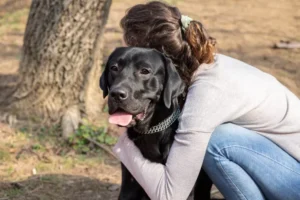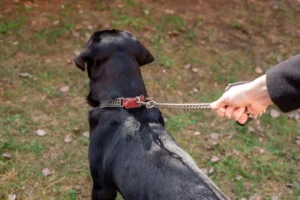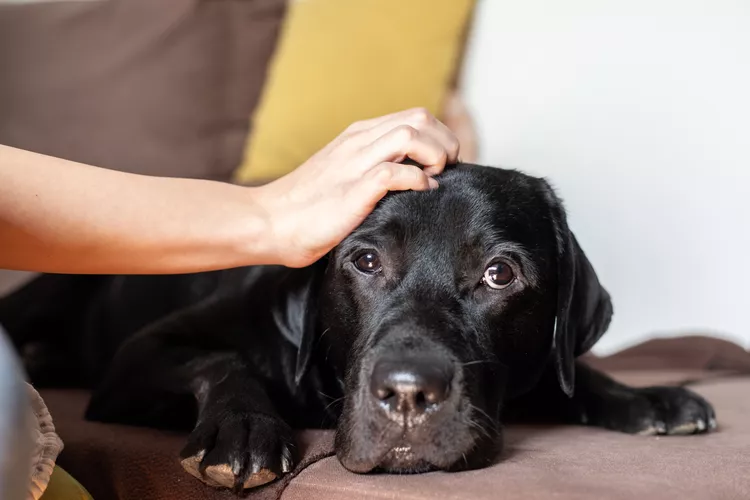Dogs do their best to be our loyal companions, but let’s be honest—we don’t always make it easy for them. Without even realizing it, we sometimes do things that can confuse, upset, or stress our furry friends out. From mixed signals to human habits that just don’t translate well to dog behavior, we occasionally push our dogs away instead of bringing them closer.
Here are some common behaviors many of us are guilty of—plus tips on how to avoid them so your pup stays happy and comfortable.
1. Relying Too Much on Words Instead of Body Language

Dogs might understand a few familiar words—like “walk,” “treat,” or “toy”—but they don’t speak our language. What they really pay attention to is our body language. That’s where things often go sideways: we say one thing, but our posture or gestures say another.
Take the command “stay,” for example. If you say it while leaning forward and holding out your hand, your body might actually be telling your dog to come closer, not stay put. The result? A confused dog and a frustrated owner.
Want a fun challenge? Try spending a whole day communicating with your dog using only body language. You’ll be surprised how much your movements already “speak” and how clearly your dog responds.
2. Hugging Your Dog

We love hugs, but dogs… not so much. While some might tolerate it, many dogs find hugging uncomfortable or even threatening. In dog language, wrapping your arms around them can feel like a dominance move.
If you’re unsure how your dog feels about your hugs, watch their body language: do they stiffen up, pull their head away, avoid eye contact, or flatten their ears? Those are signs they’re not enjoying the embrace.
Instead of hugging, try a gentle rub or scratch in a spot they enjoy. Let your dog show you how they like to be loved.
3. Patting Their Head or Touching Their Face

Think about it—if someone suddenly reached toward your face, wouldn’t you flinch? Dogs feel the same way. Many don’t appreciate being patted on the head or having their face touched, especially by someone they don’t know well.
Even friendly dogs may subtly lean away or show discomfort. Try petting them on the chest, back, or near the base of the tail instead. Most dogs enjoy a belly rub or an ear massage much more than a hand coming at their face.
4. Staring Into a Strange Dog’s Eyes

In human culture, eye contact shows confidence and trust. But for dogs, especially ones they don’t know, direct eye contact can feel confrontational.
If you lock eyes with a strange dog while approaching, it may see you as a threat. To avoid making a dog uncomfortable, approach at an angle, soften your gaze, and speak in a calm, soothing voice. This body language says “friend” instead of “foe.”
5. Not Setting Clear Rules or Boundaries

It might seem strict, but dogs thrive with structure. They want to know what’s allowed and what’s not—it makes life predictable and far less stressful.
But inconsistency is confusing. If they’re allowed on the couch one day and scolded for it the next, they won’t understand what changed. Be consistent with your expectations and gently guide your dog when they cross the line. This builds trust and helps them feel secure.
6. Forcing Them to Socialize With People or Dogs They Don’t Like

Just like us, dogs have preferences. They enjoy the company of some dogs and people, and not others. Unfortunately, we sometimes ignore their signals and push them into social situations they’re not comfortable with.
Encouraging a shy dog is one thing, but forcing interactions can damage trust—and potentially lead to defensive or aggressive behavior. Always pay attention to how your dog reacts and give them space when they need it.
7. Not Letting Them Sniff Around on Walks

For dogs, sniffing is like reading the news. Walks aren’t just for exercise—they’re a chance to explore the world through their powerful noses.
Too often, we rush walks or treat them like a chore. Instead, let your dog set the pace sometimes. Dedicate at least one walk a day to slow exploration. Consider using a different harness or leash for these “sniff walks” so your dog knows it’s their time to take the lead.
8. Keeping the Leash Too Tight

A constantly tight leash can make your dog feel restricted, anxious, and on edge. Dogs are very sensitive to tension—both physical and emotional.
A slack leash communicates that everything is okay and there’s no need to be alert. It’s not easy to train loose-leash walking, but it makes for much more enjoyable, relaxed outings for both of you.
9. Being Stressed or Tense Around Them

Dogs are experts at reading energy. If you’re stressed, anxious, or angry, your dog can sense it—and they’ll often reflect that same energy back.
So if your dog seems extra wired or on edge, take a moment to check in with yourself. Calming your own mind can help them settle down, too. Sometimes, a little self-care is the best thing you can do for your pup.
10. Not Being Fun or Engaging

Dogs live for the time they get to spend with us. If all you do is come home, feed them, and plop on the couch, they’ll quickly get bored—and bored dogs often turn into mischievous ones.
Interactive play, training sessions, or learning new tricks keep your dog’s brain and body engaged. Even just 15–30 minutes a day can make a huge difference in their happiness (and behavior).
11. Teasing

It might seem funny to bark at a dog through a fence or tug on their tail, but from the dog’s perspective, it’s anything but. Teasing can create fear, anxiety, and even lead to aggressive behavior over time.
Dogs don’t understand jokes the way we do. If you wouldn’t like someone doing it to you, don’t do it to a dog—simple as that.
Understanding our dogs better means we can love them better. By paying attention to their signals and respecting their needs, we build a stronger, happier bond. After all, they spend every day trying to be our best friend—it’s only fair we try to be theirs, too.
